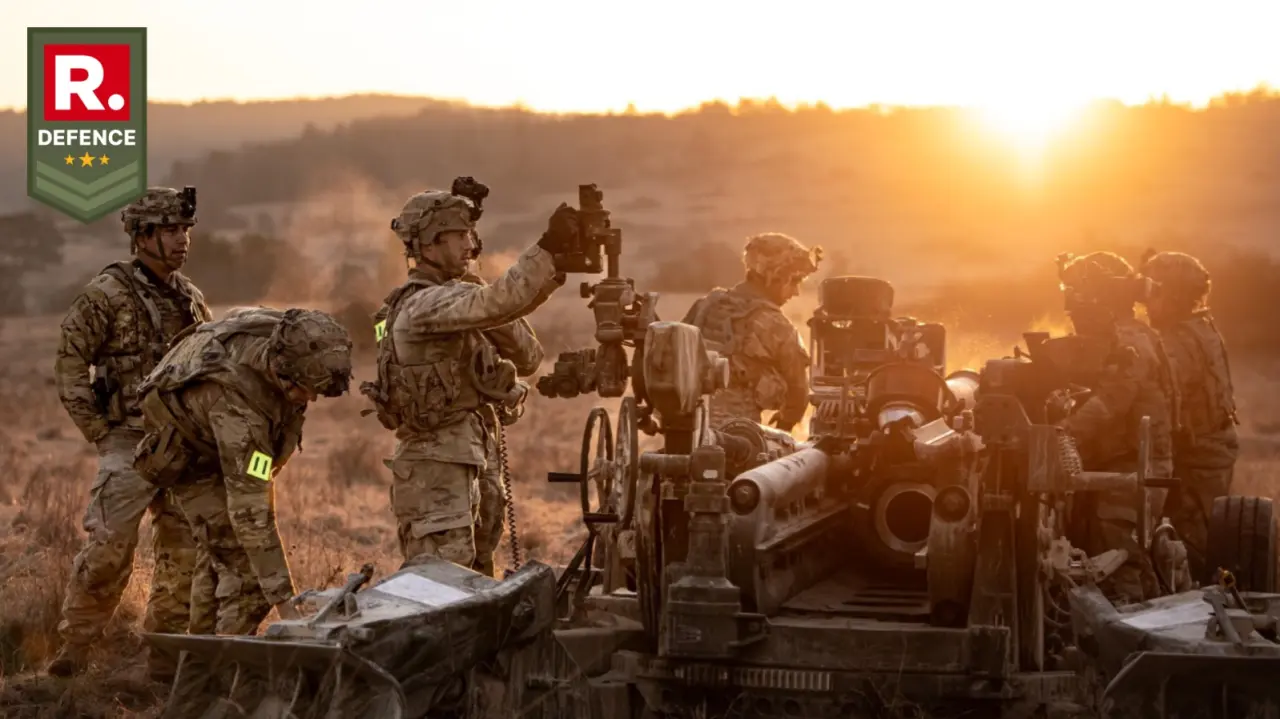Updated 27 March 2025 at 14:44 IST
Why the U.S. Army is Looking Abroad for a Long-Range Mobile Howitzer as Artillery Warfare Evolves in Ukraine
The U.S. Army is launching another search for a long-range, mobile howitzer, with live-fire trials set for January 2026 at Yuma Proving Ground, Arizona.
- Defence News
- 4 min read

Washington D.C. - After scrapping its ambitious Extended Range Cannon Artillery (ERCA) program, the U.S. Army is back on the hunt for a mobile, long-range howitzer. But don’t expect a decision anytime soon. The service is planning another round of live-fire demonstrations at Yuma Proving Ground, Arizona, in January 2026—nearly two years from now.
This isn’t the first time the Army has tested self-propelled artillery at Yuma. The 2021 trials led to the ERCA project, which attempted to stretch the cannon range to 70 kilometres—double what current systems can manage. But the program hit a dead end, forcing the Army to admit it still needed a long-range solution. Now, it’s taking a fresh look at what’s already out there.
Instead of building something from scratch, the Army sent a team last fall to scout existing systems in Germany, South Korea, Sweden, and Israel. The idea? See what’s already working in the real world and bring those contenders to Yuma for a showdown. The US Army will hand out about $5 million to each company selected for the trials, but there’s a catch—industry players will still have to cover much of the cost themselves, including transportation and ammunition.
This Time, It’s About More Than Just Range
The Army isn’t just looking for the longest shot this time around. The focus will be on how fast these systems can fire, reload, and move. The Ukraine war has made it clear that artillery is king—but it also needs to be mobile and sustainable.
Advertisement

Jim Miller, a vice president at BAE Systems, put it bluntly:
“I was a battalion commander in the early 2000s. I was pretty comfortable that I could win the first couple of fights, but I wasn’t going to get a resupply of ammo fast enough to do anything in the second fight. That’s the challenge they’re going to pursue.”
That’s why the Army isn’t just testing the guns—it’s testing the whole system, including ammunition resupply. How fast can a unit fire off rounds, reload, and move before getting hit? That’s the real question.
Advertisement
Who’s Bringing What to Yuma?
With artillery in high demand—especially with the war in Ukraine raging on—companies are scrambling to make sure they have something to show in 2026. Some of the biggest names in the defence industry are lining up:
- BAE Systems is bringing its Archer howitzer again, but this time it might be mounted on a new MAN truck, the same type Sweden is now using.
- Elbit Systems America is expected to showcase Sigma, its latest self-propelled howitzer, already in full-rate production in the U.S. for the Israeli Defense Forces.
- Hanwha Defense from South Korea is planning to send both tracked and wheeled versions of its K9 howitzer, depending on availability.
- Rheinmetall and KNDS are likely to roll out the RCH 155, a Boxer-based system they demonstrated in Germany last fall.
- General Dynamics Land Systems (GDLS) is submitting its Piranha 10x10, armed with a fully automated 52-caliber gun.
This time around, there’s also more flexibility. The 2021 trials only allowed wheeled systems, which locked out Hanwha’s K9-tracked howitzer. Now, that restriction is gone, meaning a broader range of weapons could be in the mix.
The Army Still Doesn’t Know What It Wants
Even as the industry gears up for the Yuma trials, there’s still no clear roadmap for what happens next. The Army’s initial fire strategy was presented to the vice chief of staff in January—but he sent it back. The problem? It was too narrow, focusing only on a single solution and ignoring alternatives like rocket artillery.

Now, the Army is reassessing everything. Gen. James Rainey, commander of Army Futures Command, summed it up, “You can’t manoeuvre without artillery. High-explosive artillery is the number one killer on both sides [in Ukraine], and that is not going away.”
For now, the Yuma trials are just another step in the process. The Army won’t even select teams until early fiscal 2026, meaning a final decision could still be years away. Meanwhile, companies will have to invest their own resources to prove their systems are worth considering. One thing is clear—artillery modernization is happening. But for an Army that’s still figuring out its firepower priorities, the path forward remains uncertain.
Published By : Yuvraj Tyagi
Published On: 27 March 2025 at 14:44 IST
